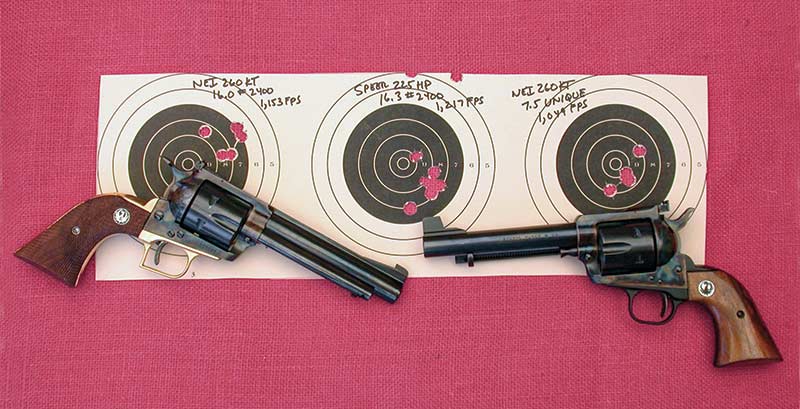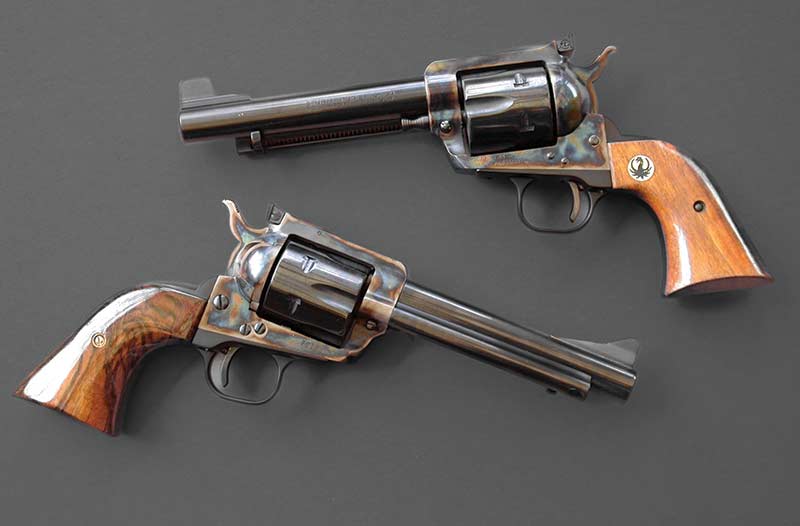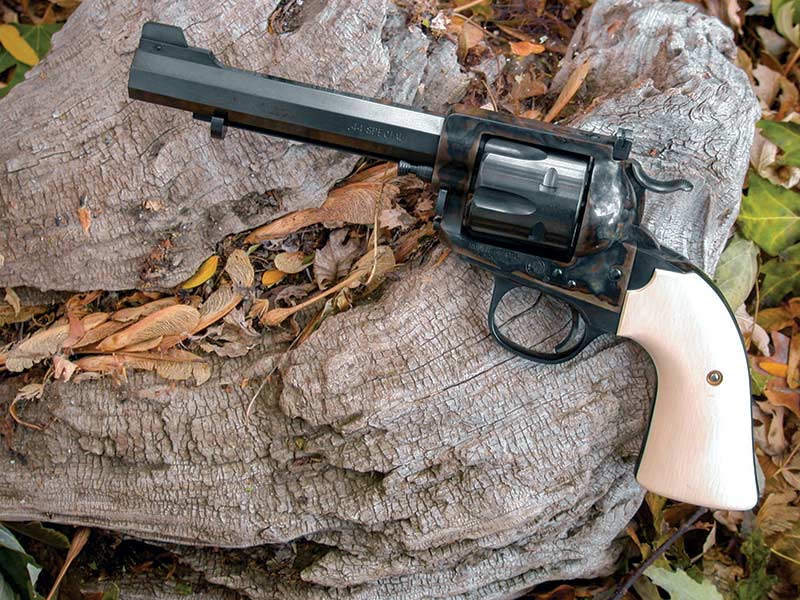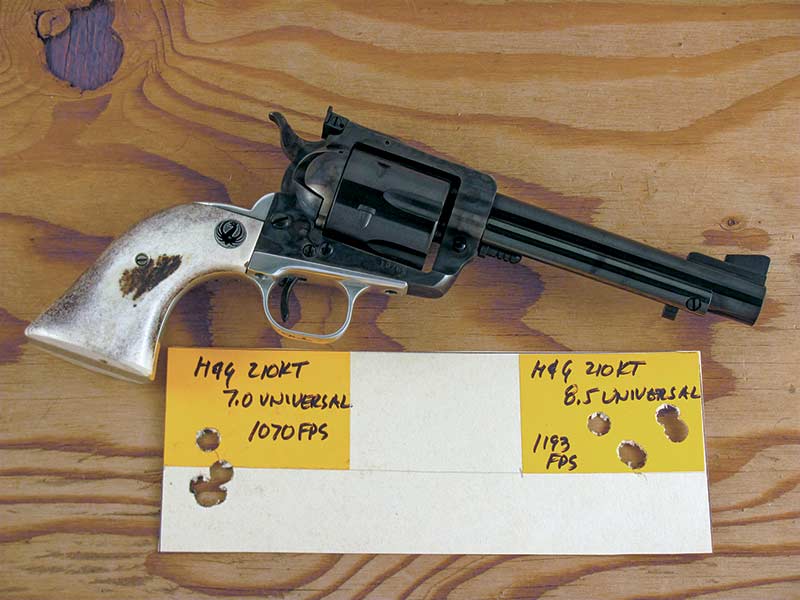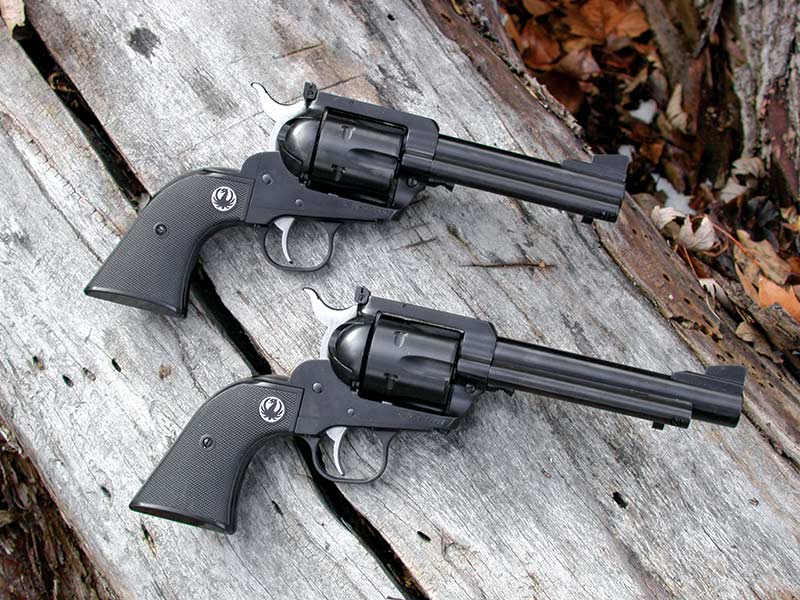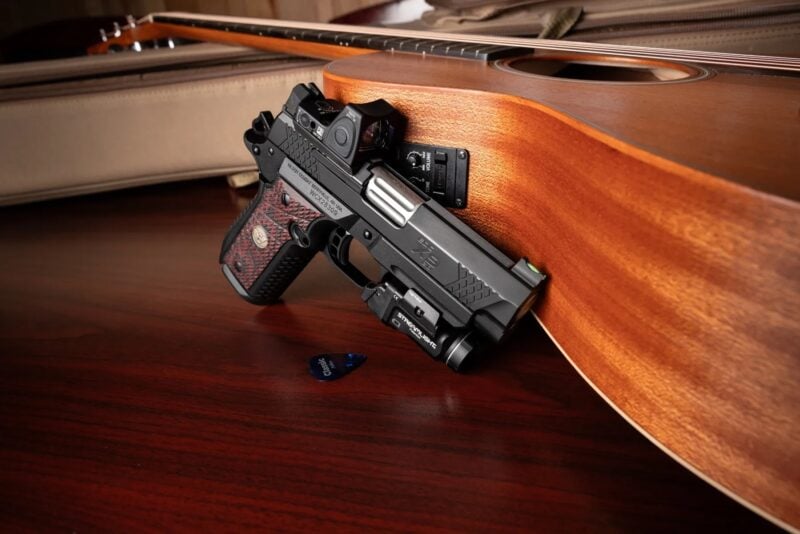In Search of the Perfect Packin’ Ruger Single-Action
Friend and fellow writer Clint Smith always comes up with great insights and one of his best concerning firearms is “One is none and two is one.” In other words, it is best, actually mandatory, to have two firearms, not just one. I learned another valuable piece of information from Kent Bellah, a GUNS Magazine writer in the late 1950s, “A pair and a spare.”
My first “pair and a spare” was carried out with the S&W .357 Combat Magnum. For the past 20 years, something very important has spurred me on to gather pairs and spares, namely my three grandsons. Whenever possible, I try to buy things in triplicate, and that brings us to the Ruger Super Single-Six. For some reason, it took a long time to find a 5½” Old Model Three-Screw .22 Super Single-Six on the used gun market. I searched locally for several years before I found the first shorter barreled version, and then, within a week, I found the second one. I had the pair but not the spare; the latter took a couple more years. However, all three grandsons are now taken care of.
The Single Six PPP
Ruger’s great little .22 carries easily, shoots accurately, is virtually indestructible, and if the .22 Long Rifle leaves somewhat to be desired, there is always the option of the .22 Magnum. The latter will certainly handle any varmint up to and including coyote size, and probably even larger (Keith wrote of a government lion hunter who used a 4″ .22 Magnum), and also makes a more than acceptable self-defense round. If I could have only one .22, my first choice would be a Convertible .22/.22 Magnum. John Christopher, Jason Michael, and Brian John all now have theirs, and it will be up to them to expand to a pair and a spare.
The Barrel Commandment
Like the 10 Commandments, the Sixgun Commandments are carved in stone and not to be transgressed. One of those commandments is “Standard Single Action Barrel Lengths Shall Be 4¾”, 5½” and 7½”. This Shall Be For All Generations.” Apparently, Bill Ruger never read the Sixgun Commandments, or he just willingly transgressed. When he brought out his first centerfire sixgun, the superbly magnificent .357 Magnum Blackhawk, the barrel length offered was 4⅝” … 4⅝”?!?! What’s that? Where in the world did that extra 1/8″ go?
Eventually, Ruger offered other barrel lengths, but he certainly did not follow the standard almost universally accepted sacred guidelines. There would be no 5½” nor 7½”. For some unknown reason, the second Blackhawk barrel length was standardized at 6½”. I have heard the reason for this was mathematics; that is, how many barrels could be cut from one piece of barrel stock the most economically. This may or may not be true. Ruger also offered the rare 10″ .357 Blackhawk very sparingly.
Enter The .44s
After the .357 Blackhawk, S&W and Remington teamed up to produce the .44 Magnum sixgun and cartridge. Suddenly, we had a .44 driving a 240-grain bullet at the same muzzle velocity as the 158-grain bullet of the .357 Magnum. Ruger re-chambered three of his .357 Magnum Blackhawks, and would you believe the prototypes had barrel lengths of 4⅝”, 5½”, and 7½”? When one of these blew during proof testing, the frame and cylinder of the .357 were increased in size, and the result was the .44 Magnum Flat-Top Blackhawk.
The stage was set; the prototypes followed the standard barrel length guidelines almost perfectly. So what does Ruger do? He introduces the .44 Magnum Flat-Top with a barrel length of 6½”! This .44 Magnum would last in production from 1956 to 1962, and in all that time, Ruger never cataloged a 4⅝” (he made one special for Elmer Keith) nor a 5½” version. He did offer approximately 1,000 units each of both a 7½” and 10″ version before production ended.
With the arrival of the Super Blackhawk .44 Magnum in 1959, one could have any barrel length they wanted as long as it was 7½”.
The ’60s And ’70s
By 1963, both the Flat-Top .357 and .44 Magnums were gone. The .357 became the “improved” version now known as the Old Model with two major changes. There were now small ears on both sides of their rear sight to help stabilize it, and in a very ill-advised move, the Colt-style XR3 grip frame was changed to the XR3-RED grip frame, allowing more room between the back of the trigger guard and the front strap. All this does for me is to give the trigger guard a running start to rap my knuckle.
In 1964, Ruger began chambering their Blackhawk for the then-new .41 Magnum, and would you believe the barrel lengths were 4⅝” and 6½”? In the early 1970s, the .45 Colt chambering was added, this time with barrel lengths of 4⅝” and 7½”. When the New Model Blackhawks replaced the Old Model Three-Screw Blackhawks in 1972-1973, the barrel lengths stayed the same. Whatever the reason, Ruger never produced a Perfect Packin’ Pistol-Style 5½” Blackhawk in any of their standard chamberings of .357 Magnum, .44 Magnum, .41 Magnum, and .45 Colt until very recently. Both the .44 Magnum and .45 Colt have been offered, as well as some very special runs of Bisley Models.
Time To Customize
What Ruger did not do, I had to do. Starting with four Blackhawks, a 6½” .44 Magnum Blackhawk, 6½” .357 Magnum and .41 Magnum Old Model Blackhawks, and a 7½” .45 Colt Old Model Blackhawk, all were cut to an easy packin’, easy shooting, 5½” barrel length. Three of these were accomplished by my local gunsmith, Tom Cripe, at Buckhorn, while the .41 Magnum was turned over to Alan Harton also to be refinished and case hardened. These are four of the handiest sixguns one is likely to find. When I am through with them, one will go to my son and the other three distributed among the grandsons. Call them a pair and a pair.
What? No .44 Specials, you ask? That would certainly be unbelievable and impossible. Ben Forkin has built two 5½” PPP Ruger .44 Specials using Three-Screw .357 Blackhawks. For one of these, we went with a 6½” Flat-Top .44 Magnum barrel cut back, and the other wears a 5½” Colt New Frontier .44 Special barrel. From Andy Horvath comes a .44 Special PPP with a 5½” ribbed barrel from a S&W .44 Magnum. David Clements built one using a #5 SAA grip frame of his design, and Alan Harton’s contribution has an octagon barrel and a Bisley Model grip frame.
Ruger Bisley
One of the best things Ruger ever did was introduce the Bisley Model in the mid-1980s. The standard Colt-style Single Action grip frame fits the most hands and works the best up to a point. With 250- to 260-grain bullets at 900–1,000 feet per second, there is no problem. However, for me at least, things get nasty with heavier bullets and greater speeds. Felt recoil increases geometrically.
The Bisley Model helps to alleviate this. John Linebaugh was the first custom gunsmith I know of to embrace the Bisley Model grip frame to handle the recoil of his .500 and .475 Linebaugh cartridges. He also pretty much standardized the 5½” barrel length for several reasons. It packs easily, fits under a pillow or bedroll at night, and the ejector rod housing butts up against the barrel band for the front sight. This prevents it from traveling forward and shearing off the ejector rod screw under recoil.
My first real big bore, I mean really big bore PPP, was built by John Linebaugh on a .357 Magnum Bisley. A new five-shot .500 Linebaugh cylinder oversized to completely fill in the frame window was fitted along with a 5½” barrel. In the past, I’ve shot some really heavy loads from this gun; however, now I am more content with 800–900 fps loads. Jim Stroh started with a Bisley Model, fitting a 5½” heavy barrel along with a full-size five-shot .45 Colt cylinder, and David Clements turned my 1976 Liberty Barreled 5½” Super Blackhawk .44 Magnum into a Bisley Model.
When the Bisley Model was introduced by Ruger, four chamberings were available: .357 Magnum, .41 Magnum, .44 Magnum and .45 Colt. The only barrel length available was 7½”. I tested all four Ruger Bisley Models and subsequently purchased them. They have all now been customized. First, the .357 Magnum Bisley was sent to Gary Reeder along with an extra 9mm cylinder. He re-chambered the auxiliary cylinder to his .356 GNR, a .41 Magnum necked down to .357, totally tuned and tightened it, refinished it as only Gary can do, and embellished it with a few gold inlays. This one has stayed with a 7½” barrel length.
The other three Bisley Models were sent to Ben Forkin to be changed into a caliber mismatched pair and a spare. Ben cut all three barrel lengths to 5½”, totally tuned and tightened the actions, and color case hardened the frames and hammers. Many years ago, all three of these had been fitted with exquisitely custom walnut stocks by the late Charles Able; these were maintained. These are now three of my favorite single-action sixguns, and I do like the advantage of the New Model actions allowing the safe carrying of six rounds. I am only the caretaker for these three as they belong to the three grandsons.
More recently, Ruger has cataloged five 5½” New Model Blackhawks: a stainless steel .327 Federal Magnum, blued .45 Colt and .44 Specials, and the .44 Magnum is offered as a Super Blackhawk with the standard grip frame in both blued and stainless steel versions. It took quite a while, but Ruger finally offers what really may be the best single-action barrel length of all.


